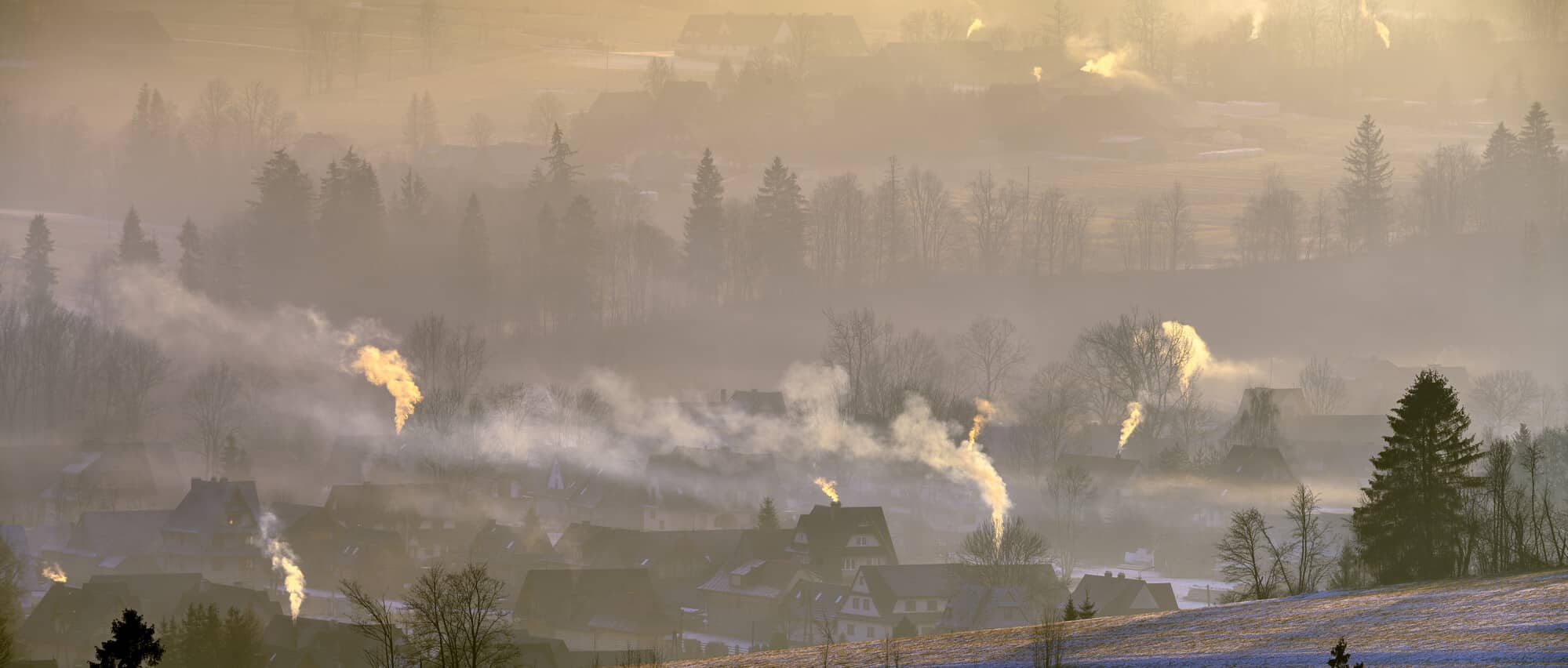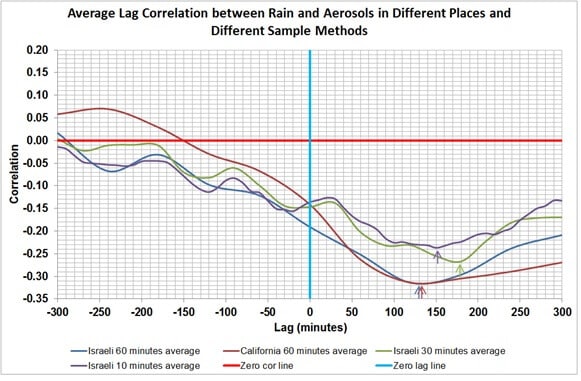The results of the study conducted at Tel Aviv University indicate that from the moment it starts to rain, you see a maximum decrease of aerosols in the air until about two and a half hours (between 140-160 minutes), after which the amount of particles starts to rise again and even increases for various reasons

A new study by Tel Aviv University identified for the first time a connection between rain and aerosols. The identification is done using 10 measuring stations in Israel and California which simultaneously measure both the amount of precipitation and the amount of particles. The results of the study indicate that from the moment it starts to rain, you see a maximum decrease of aerosols in the air until about two and a half hours (between 140-160 minutes), after which the amount of particles starts to rise again and even increases for various reasons.
The researchers emphasize that the meaning of these data and discoveries is still not completely clear and requires a check of their existence through additional extensive measurements in the world and only after that will it be possible to add what is necessary and even missing in the existing climate models.
The research was conducted under the leadership of researchers Prof. Pinchas Alpert, Haim Shapir and Emily Al-Hachem from the Porter School of Environment and Earth Sciences at Tel Aviv University. The study was published in the prestigious journal Geophysical Research Letters.
Prof. Alpert explains that rains and aerosols play central roles in the Earth's climate system and significantly affect our lives. Aerosols are actually solid particles that are in the air and are divided into different types - dust (desert sand), air pollution, plant particles (which cause allergies), salt particles (due to proximity to the sea), sulfur particles, etc. Even on a clean day, in every cubic centimeter there is a concentration of hundreds of particles in the air, and on a polluted day the concentration can reach thousands of particles. Geographically, Israel is in a special area of the earth where many particles are drained both from the Sahara desert region and from the polluting industry of Eastern Europe, which ultimately affects the health of all of us.
It should be noted that one of the topics being studied today in the field of environmental quality is how aerosols affect precipitation and vice versa - how the rain affects the amount of aerosols in the air. For example, cloud seeding (an issue that the State of Israel has been dealing with almost since its foundation) is an example of the effect of aerosols on the amount of precipitation. One of the missions of the late astronaut Ilan Ramon in space was to better understand the effect of particles on the climate and the clouds in particular. In addition, the important context of studies on these topics is the effect of the increase in the amount of aerosols observed in many areas of the world on global warming, solar radiation and global climate change. It should be noted that there is an extensive and in-depth discussion among scientists on the subject, among other things due to difficulties in measurements.
As part of the study, the researchers identified that following the rain, the amount of aerosols drops significantly and after about two and a half hours reaches minimum values. Immediately after that, the physical processes responsible for an increase in the concentration of particles in the air become dominant. "In the research we carried out, we clearly see a very strong connection between rain and the concentration of aerosols, and for the first time we were able to measure the connection," says Prof. Alpert. "These are data that were not known until now, therefore a comprehensive study of the physical processes that are missing in the models currently being developed in many centers all over the world is urgently required for a better understanding of the effects on global warming."
"The results of the study illustrate the importance of measuring aerosols and rain simultaneously near the ground, and show the need for integrated monitoring," adds the researcher Emily Alacham. "One of the major contributions of the research is to climate change models. In fact, it will be a tool for scientists, will give them a new angle and promote research on the subject."

- Scientists offer an answer to the question: does polluted air increase or decrease rain?
- Things that Yaorim know: where does the compass needle point?
- Axis experiments provide unprecedented information regarding cloud formation
- The local effect of aerosols in the atmosphere can be greater than the greenhouse effect

One response
There are many reasons for the decrease in the amount of aerosols.
A. There are many studies that calculate the amount of collisions between raindrops and aerosols (it is true that the chance of such a collision is small, but it is an effect that accumulates)
B. The fall of rain causes potential aerosols that are not yet in the air to remain on the ground. Wet dust will not start to float, neither will pollen and more.
That is to say, there is a decrease in both the creation of the aerosols (which explains the time differences) and an increase in the loss of the aerosols.